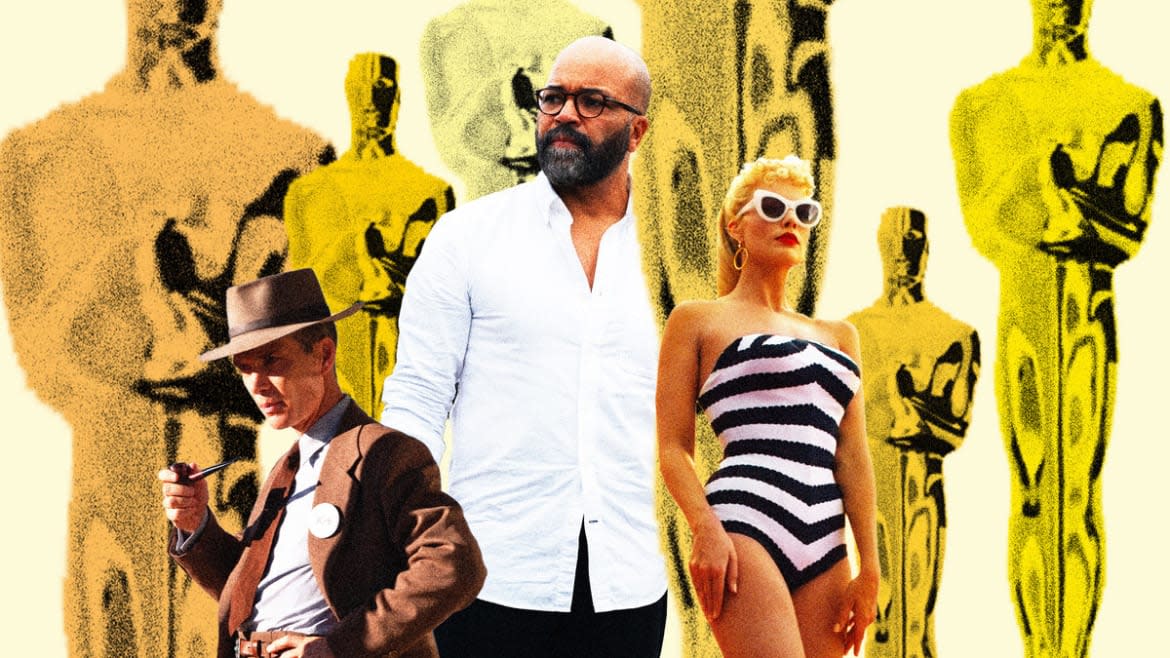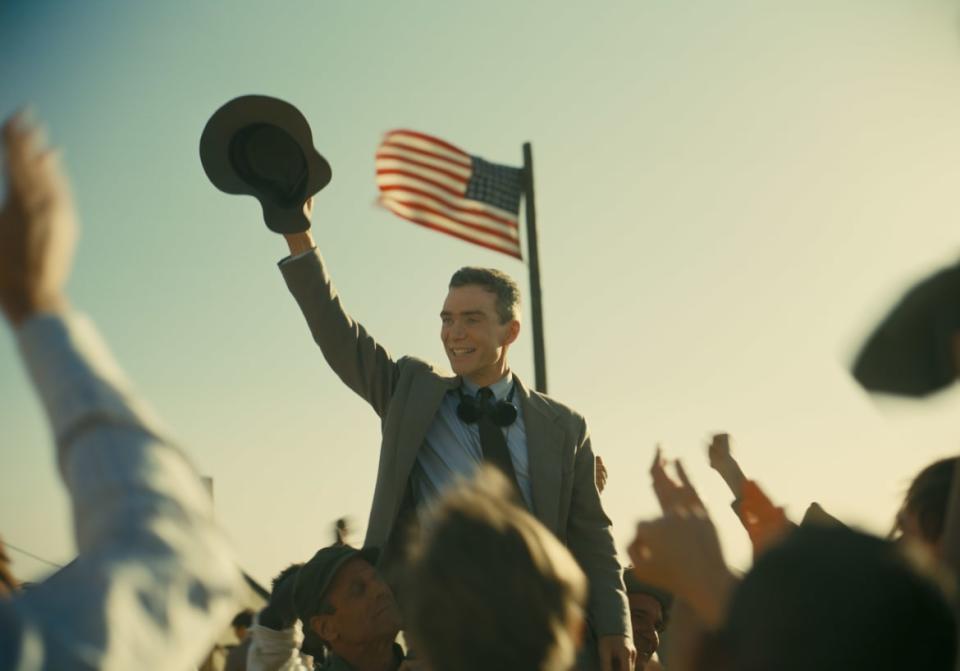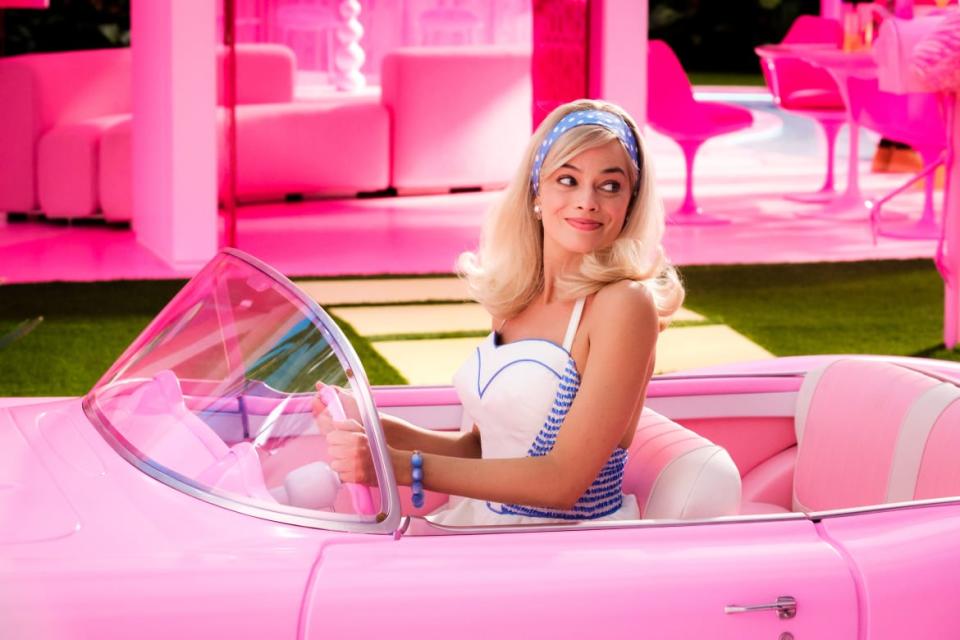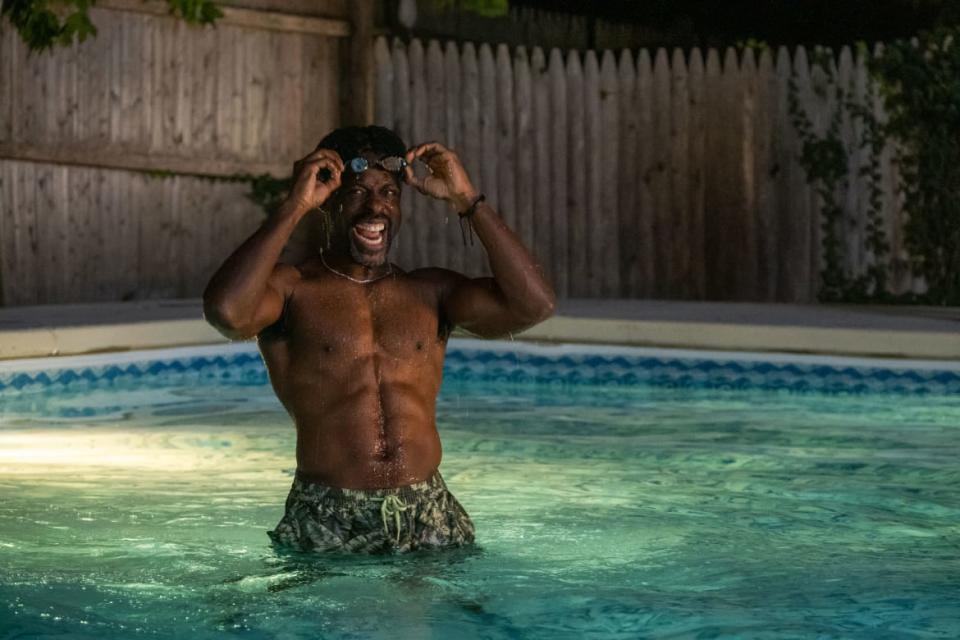This Year Gave Us the Perfect Oscars Best Picture Lineup

- Oops!Something went wrong.Please try again later.
If the tea leaves read true, Sunday is going to be a very big night for Oppenheimer. After a string of significant victories on the awards trail, Christopher Nolan’s towering biographical blockbuster is the one to beat at the Oscars, the even-odds favorite for Best Picture. Any other film picking up the top prize at the end of the ceremony would, at this point, qualify as an upset of Shakespeare in Love proportions.
That’s probably as it should be. Setting aside whether Oppenheimer really is 2023’s finest (though, actually, it is), it’s certainly the most logical recipient of movie-of-the-year honors. How often, after all, does a film achieve such a total confluence of commercial and critical approval, of popularity and prestige? The anomaly of Nolan’s achievement is that he made a lavish drama for adults that performed like a franchise event, and in the process seemed to renew public interest in the movie-theater experience. Oppenheimer confirmed that Hollywood can still find that elusive intersection of art and commerce. What else is Best Picture for than to celebrate that kind of rare success?
Yet if there’s only one true choice for the win this year, all of the films competing for the Oscar make sense as nominees. This is the first time in recent memory that every single one of the Best Picture contenders feels like it belongs. That’s not a quality judgment. (For this writer’s wholly subjective money, there are countless movies worthier of recognition than, say, Maestro.) Rather, it’s an acknowledgement that the Academy has offered an uncommonly eclectic lineup and provided a wide view of the year in cinema. For once, the whole slate is made up pretty much entirely of movies that mattered.
Yes, this is exactly what a Best Picture lineup should look like.

Oppenheimer
Historically, the Academy Awards have not always been a good barometer of what’s going on in the world of movies. For a long while, the organization sat comfortably and almost perennially in the middle, with a rather narrow notion of what qualified as an award-worthy achievement. Voters celebrated films with an inflated sense of self-importance—what the great film critic Manny Farber described as “white elephant art”—while often neglecting both commercially minded genre movies and adventurous art-house fare. The ultimate Oscar flub might be the Best Picture lineup of 1989/1990, when the rapturously reviewed box-office hit Do the Right Thing—a movie that truly touched the middle rail of American culture—lost out on a Best Picture nomination to a conspicuously safer crop, including Field of Dreams, Dead Poets Society, and freakin’ Driving Miss Daisy.
The Academy’s regular tendency to ignore blockbusters eventually inspired a change in the rules, indefinitely expanding the net of Best Picture. In fact, it was the snubbing of another zeitgeist-defining Christopher Nolan movie, The Dark Knight, that spurred this change; the backlash to its absence pushed organizers to double the size of the category in 2009, with the hope that 10 instead of five nominees would allow more populist entertainments to break into the race—and maybe, also, some smaller films that wouldn’t otherwise have a shot.

Barbie
Of course, the Academy was still the Academy. The first year Best Picture went supersized, voters made room for The Blind Side—a nomination so embarrassing, it’s sometimes credited for the decision to change the rules again, with the Oscars soon after adopting a system that would allow for between five and 10 nominees. (Under these rules, a movie had to appear at #1 on a certain percentage of the ballots to crack the lineup. We’ve now gone back to an even 10 nominees every year.) Since then, AMPAS has still sometimes gravitated towards middlebrow pap, nominating accidentally self-parodic biopics like The Theory of Everything over terrific mainstream hits like Gone Girl or highbrow international triumphs like Two Days, One Night.
But recent years have shown promising progress in lurching towards a more balanced, interesting Best Picture race. The #OscarsSoWhite movement—a campaign to acknowledge and rectify the fact that old white men were egregiously overrepresented in Hollywood’s most prestigious voting body—resulted in an influx of new members, some of them people of color and many of them from other countries. This diversification of the Academy diversified the lineup of movies it celebrated, too. Just look at the nominees from 2021, a group that included such once-unlikely contenders as a big-budget sci-fi epic (Dune) and a three-hour Japanese drama (Drive My Car).
Whoa! The Oscars Really Might Not Suck This Year
This year really feels like the culmination of those ongoing efforts—the moment that the Oscars finally got it right. The current Best Picture lineup represents a spectrum of budgets, genres, runtimes, and measures of success, while highlighting multiple movies by women and filmmakers of color. The category doesn’t quite offer something for everyone, but it does span a much larger stretch of movie culture than what the Academy usually acknowledges. A cinematic omnivore with a taste for the multiplex and the art house could eat well from this buffet.
Of course, the phenomenon colloquially referred to as Barbenheimer is present and accounted for; no box-office event that could inspire so much “the movies are saved” discourse could fail to earn its place in the race. But unstoppable popularity aside, Oppenheimer’s opposite number, the cheerier side of that summer double bill, is still an unlikely contender. How often does an unapologetically mainstream comedy like Barbie crack the Best Picture ceiling? Even more so than Top Gun: Maverick, it embodies the kind of well-reviewed sensation that should be a regular part of the Best Picture conversation.
Comedies are unusually well-represented this year. Beyond the love for Greta Gerwig’s chart-topper, the category includes no fewer than three crowd-pleasers that left festivalgoers in stitches—the Landmark Theatres trifecta of lit-world satire (American Fiction), ’70s-modeled character piece (The Holdovers), and flamboyantly stylized and horny steampunk farce (Poor Things). In an earlier age, the Academy would likely make room for only one such mini-major yukfest. This year, we’ve got three very different ones, comparable mostly in how they’ve been embraced by audiences and critics alike. Again, you don’t need to love any of them to understand why they belong here.

Poor Things
More historically, this year’s Best Picture lineup boasts a record three films mostly or entirely in a language other than English—a true leap forward for an organization that used to keep international cinema siloed off. Even setting aside the subtitles, none of these nominees exactly fit the profile of your average “Oscar movie.” Anatomy of a Fall is a talky and ambiguous French courtroom drama that dances around its central mystery. Past Lives, an American romance with long stretches of dialogue in Korean, is delicate and understated (and also probably the consensus critical favorite of 2023). And The Zone of Interest is maybe the most formally and conceptually audacious movie ever nominated for Best Picture. All three suggest a membership that’s reaching beyond the spaces from which Oscar hopefuls are often plucked.
Naturally, the lineup also makes room for some hefty American dramas, the Academy’s bread and butter. No comprehensive survey of 2023’s most notable films could exclude either Oppenheimer or its lengthiest competition, Killers of the Flower Moon, a three-plus-hour crime epic from a living master working at the top of his game. Meanwhile, Maestro earns the tasteful, decade-spanning artist biopic slot, even as it breaks from a legacy of like-minded past nominees in a few ways, including director Bradley Cooper’s sometimes eccentric staging.
The Oscar for Best Documentary Short Can’t Go to These Cute Kids
One could naturally argue that these 10 movies still open a rather tiny window into what cinema is today. There are no action movies, no musicals, no horror. One of the most eclectic Best Picture lineups ever isn’t so eclectic as to include any nonfiction; documentaries, unlike non-English films, are still very much relegated to their own category. And despite the huge success of Spider-Man: Across the Spider-Verse and the acclaim bestowed upon The Boy and the Heron, no animated movies broke through this year; you have to go back to when Best Picture expanded a full 15 years ago, to the consecutive nominations for Up and Toy Story 3, to find a cartoon in contention.

American Fiction
And the Oscars still very much remain pay-to-play, with Best Picture divided up among a small handful of high-spending distributors—the Hollywood studios, mini-majors, streaming giants, and boutique art-house labels like A24 and Neon that can afford to blow millions on For Your Consideration campaigns. Only the nearly consensus cheerleading of the critical community can make an awards-season player out of a movie as outside the mainstream as Drive My Car, one of the few films to score a Best Picture nomination without the infrastructure of a Hollywood powerhouse behind it. A truly eclectic Picture lineup would include more low-budget curveballs.
But then, there will always be notable omissions from the Oscars race. To really capture a year in cinema, you’d need much more than 10 slots. This year’s slate still feels like the platonic ideal of a Best Picture lineup, putting the major milestones in conversation with each other. More than simply fitting some definition of what the greatest films of a year were (again, that’s impossibly subjective), Best Picture should celebrate the ones that made an impact, that inspired heated conversation and ardor. All of this year’s nominees fit that bill, even if one in particular landed with a little more blinding force than the others.
Get the Daily Beast's biggest scoops and scandals delivered right to your inbox. Sign up now.
Stay informed and gain unlimited access to the Daily Beast's unmatched reporting. Subscribe now.

